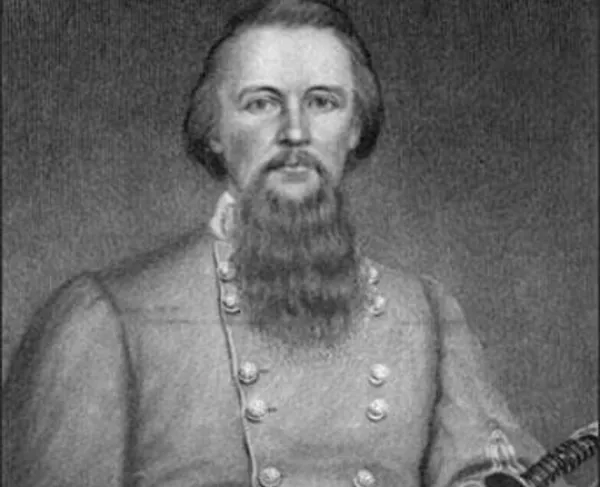George B. Anderson

Brigadier General George Burgwyn Anderson was born on April 12th, 1831 in Hillsboro, North Carolina. Anderson enrolled in the University of North Carolina and graduated at the top of his class. After graduating, Anderson enrolled in West Point, where he graduated tenth in his class of thirty-four as a brevet Second Lieutenant of the 2nd Dragoons.
After his training at West Point, Anderson was sent to California to assist in land surveying efforts for future railroads. Most of his time was spent on the frontier. He served as an adjutant in the Utah Territory during the Utah War of 1858. After the conflict, Anderson was promoted to captain. In 1859, Anderson was sent back to the east as a recruiting officer in Louisville, Kentucky.
On April 25, 1861, Anderson resigned from the United States Army and returned to North Carolina. He was commissioned as colonel of the 4th North Carolina Infantry on May 18th, 1861, and was sent to Manassas, Virginia, to protect Manassas Junction after the Battle of First Bull Run. Anderson and his men remained at Manassas Junction until March of 1862. Anderson and his men marched down to Williamsburg, Virginia, to help repel General George B. McClellan’s Union forces from moving up the Virginia Peninsula in the Peninsula Campaign. Anderson’s fierce fighting was commended at the Battle of Williamsburg. On June 9th, Jefferson Davis appointed Anderson to Brigadier General for his bravery at the Battle of Williamsburg. At the Battle of Malvern Hill, Anderson served as a brigade commander, and his unit sustained heavy casualties in a charge on Union positions. Anderson was wounded on his hand during the charge. After the battle, his old 4th North Carolina earned its nickname “The Bloody Fourth”. While recovering, Anderson played a role in the defenses around Richmond, Virginia, in July of 1862.
Anderson recovered from his injuries and returned to active duty in September of 1862. Anderson and his men marched towards Maryland to participate in the Maryland Campaign. Anderson and his brigade fought at the Battle of South Mountain against the Union army before heading further into Maryland at Sharpsburg to fight at the Battle of Antietam.
At the Battle of Antietam, Anderson and his men took position at the Sunken Road, also nicknamed Bloody Lane. While in the heat of battle, a Minnie ball pierce through his ankle, severely injuring him. Anderson was quickly transported from Antietam to Shepherdstown, West Virginia. From Shepherdstown, he was transported to Staunton, Virginia, and then transported to Raleigh, North Carolina. In Raleigh, doctors amputated his foot, however, the infection that he had sustained between Antietam and Raleigh had already spread, and his body could not withstand the trauma of his amputation. George Burgwyn Anderson died on October 16th, 1862, in Raleigh, North Carolina. He is interred in Historic Oakwood Cemetery in Raleigh. Anderson was one of six generals to be killed or mortally wounded at the Battle of Antietam.
Related Battles
12,401
10,316





